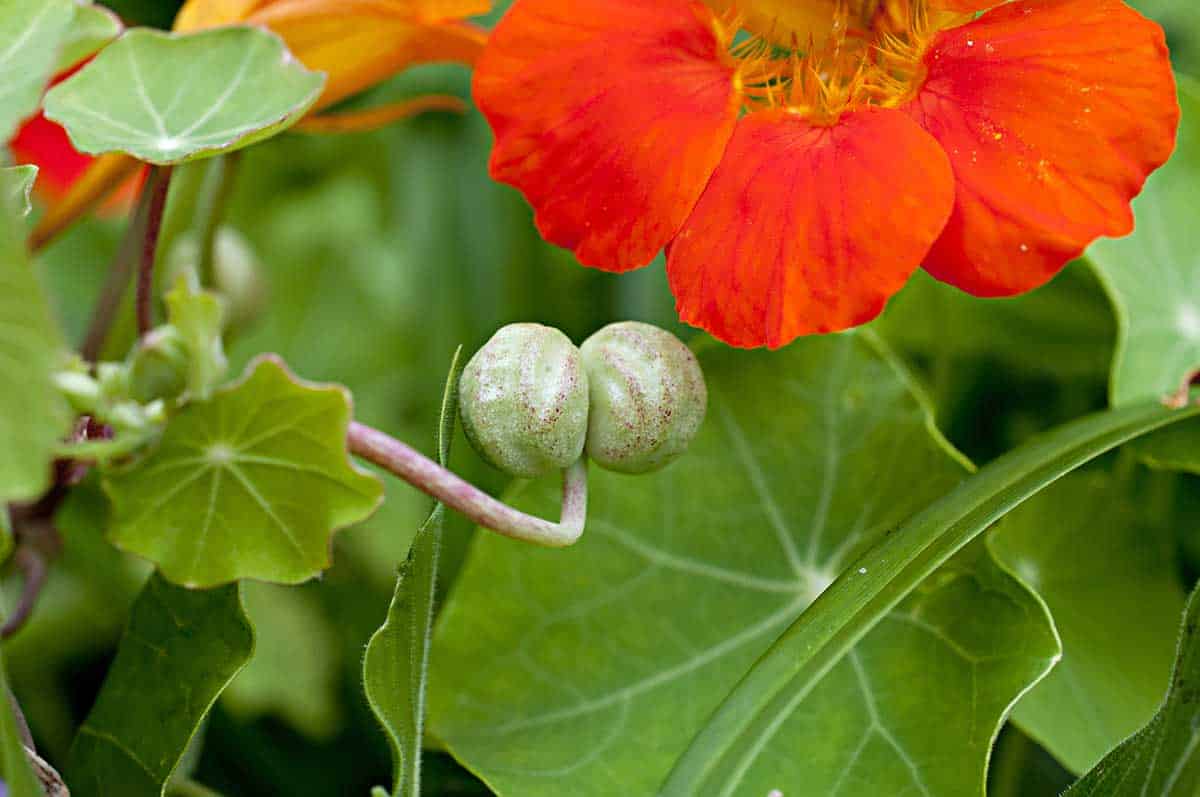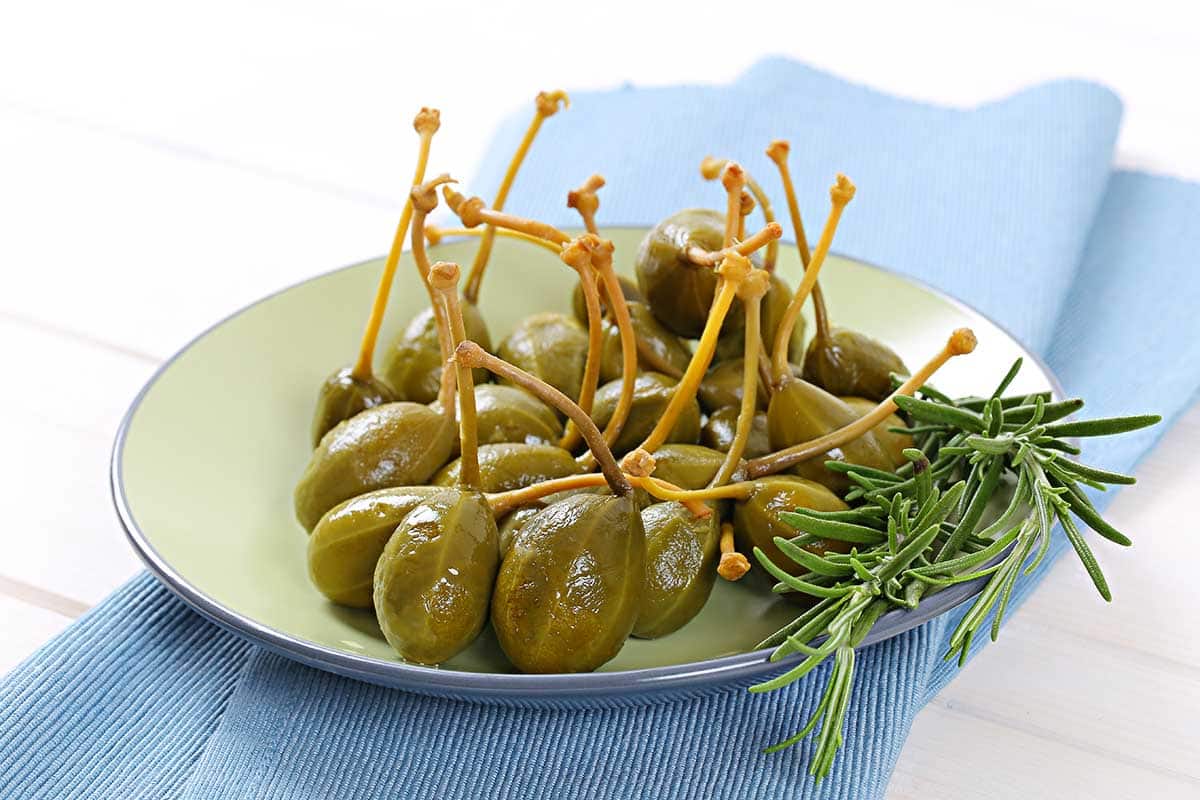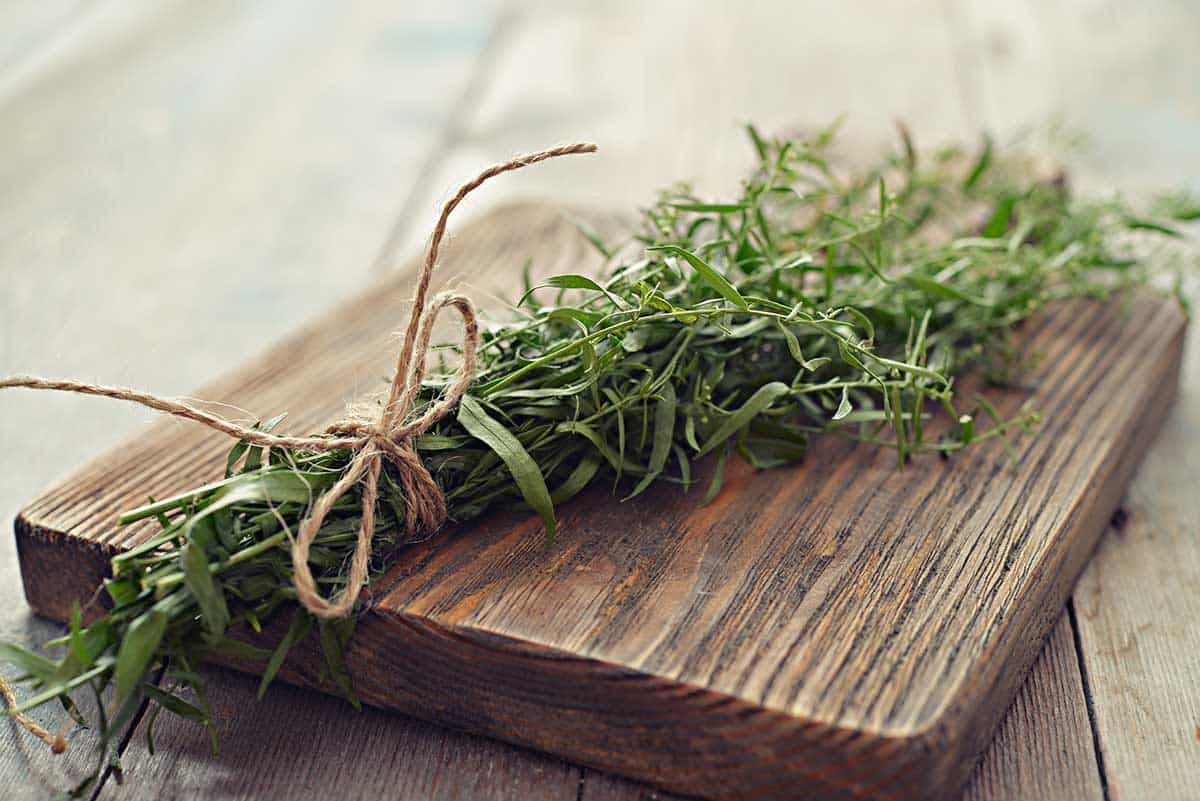Capers are a great go-to ingredient if you want to add a touch of tanginess and complexity to your dishes. But not everyone loves how capers taste, plus they are not always available. Luckily, there are many capers substitute options you can use.
In this article, we’ll explore a variety of caper alternatives. We’ll also tell you how to use them in different recipes to achieve your desired taste.

Capers are the edible flower buds of a bush called Capparis spinosa, which grows in Mediterranean countries and parts of Asia.
They have an intensely bitter flavor when you eat them as-is. So, people dry and preserve these buds by pickling them in salt brine to mellow the bitter taste. Others use vinegar brine instead.
For this reason, these pickled flower buds have a salty flavor. They’re also tart and slightly acidic at the same time.
Capers are a common addition to dishes in Mediterranean cuisine, specifically in pasta and seafood recipes.
People also use capers to add a layer of flavor to tartar sauce. You can eat capers with bagels and cream cheese as well. And fried capers also make great garnishes.
You can find them submerged in brine and placed in clear jars in most grocery stores.
Here are the best substitutes for capers you can use in your recipes.

The best capers substitute are green olives. These olives tick all the boxes: salty, slightly acidic, and a hint of tang.
Their biggest difference from capers is that they are larger. But you can easily fix that by chopping them. Once you do, your swap will not be noticeable, especially if the recipe needs chopped capers.
You may also opt for black or Kalamata olives if green olives are unavailable. They have a similar briny flavor but are less salty than green ones.
Tip: Use olives to replace capers in salads, dressings, and pasta recipes.

Pickled jalapeno peppers do not exactly taste like capers. But they have similar texture, tanginess, and acidity notes.
These characteristics make these pickles versatile. For this reason, you can use them as caper substitutes too.
Do note that pickled jalapenos may come with sweet, sour, and citrusy flavors.
They may alter the taste of your recipe significantly.
You may use these peppers whole. But chopped pickled jalapeno peppers best mimic capers.
Tip: To get a closer flavor match to capers, add vinegar and salt. Pickled peppers are great if you want to add some heat stews, salsas, chili, and pasta dishes.

In a pinch, dill pickles can serve as an excellent substitute for capers. They come in various textures and flavors, allowing you to choose the best for your dish.
You have to remember that dill pickles are crunchier than capers. So, you should expect a change in texture in your recipes.
Regarding taste, dill pickles offer a similar vinegary and salty flavor.
The good thing about this option is that they keep well. Stock up on dill pickles; you’ll always have a handy capers substitute.
Tip: You can use dill pickles in tartare, salad, and marinade recipes. Or, add them whole or sliced up and added to sandwiches or pizzas instead of capers.

Nasturtium seeds have a distinct peppery flavor. But when you pickle them, nasturtium seeds can have flavors that mimic capers.
Pickle young, green buds of the nasturtium plant by putting them in a jar with dill, vinegar, and garlic.
Since pickled nasturtium seeds are milder, they’re perfect if you find capers too strong.
Keep the edible flowers, too. They can serve as a unique garnish for any dish.
The challenge with this alternative is that they are not that common. But if you live in the Mediterranean, you’ll likely find them growing in the wild.
Tip: Pickled nasturtium seeds are great swaps for capers in sandwiches, seafood recipes, and salads.

You get caper berries when you let the capers grow instead of picking them before they ripen. That said, they have a similar flavor profile.
You can use caper berries in any recipe that calls for capers, including salad and pasta dishes.
But since these berries are bigger, a single caper berry to replace multiple capers.
Remember that too many caper berries can overpower your other ingredients.
Tip: The best practice is to start with a small amount and do a taste test. Add more as you go until you reach your desired flavor.

Tarragon looks and tastes very different from capers. That said, using tarragon instead of capers will result in a flavor shift in your final dish. But it is a good option if you do not particularly like the taste of capers.
The tarragon flavor blends well with many dishes – you can add it to almost anything.
It is a kitchen staple, so it is a convenient swap you can use in a pinch.
Tip: To compensate for tarragon’s sweet and floral taste, you may need to use some salt, lemon juice, or vinegar.
Capers have a distinct crunchy texture that can add a unique dimension to dishes. Nasturtium seeds or caper berries are the best swaps when the texture is important to your dish.
If you want a similar flavor, use caper berries or green olives. But if you want to give your dish a twist, you may use tarragon instead.
Size matters because capers are small. Using a larger alternative, like whole green olives, will result in a very different dish. Pick a swap like nasturtium seeds or chop the bigger options before use.
It is critical to pick a substitute that you can easily source. Tarragon, dill pickles, and green olives are everywhere, so they are accessible options. But nasturtium seeds are challenging to find unless you live in the Mediterranean area.
Capers offer a unique, salty, and slightly tangy flavor to recipes. They also add a crunch that improves the texture of dishes. People use them to add a pop of flavor to dishes like pasta, salads, and fish dishes.
Yes, pickles can replace capers in some dishes. Pickles are also salty, but they do not taste exactly like capers. That said, you can use them to replace capers as a garnish or a flavor accent. In recipes where capers are the main ingredient, expect the final dish to taste different.
Of course, you can skip capers if you don’t have them or don’t like their taste. But doing so may change the taste and texture of the dish. For this reason, you may need to adjust other ingredients accordingly.
Not everyone likes the pungent taste of capers. Fortunately, several capers substitute options exist. The closest-tasting ones are green olives, caper berries, and nasturtium seeds.
Tarragon and pickled peppers are unconventional choices but are equally good. Fresh thyme and green peppercorns are other options that can work but are not on the list above.
Choose the perfect ones depending on their texture and flavor. Ultimately, the best swap will always be the one that suits your recipe and taste.





